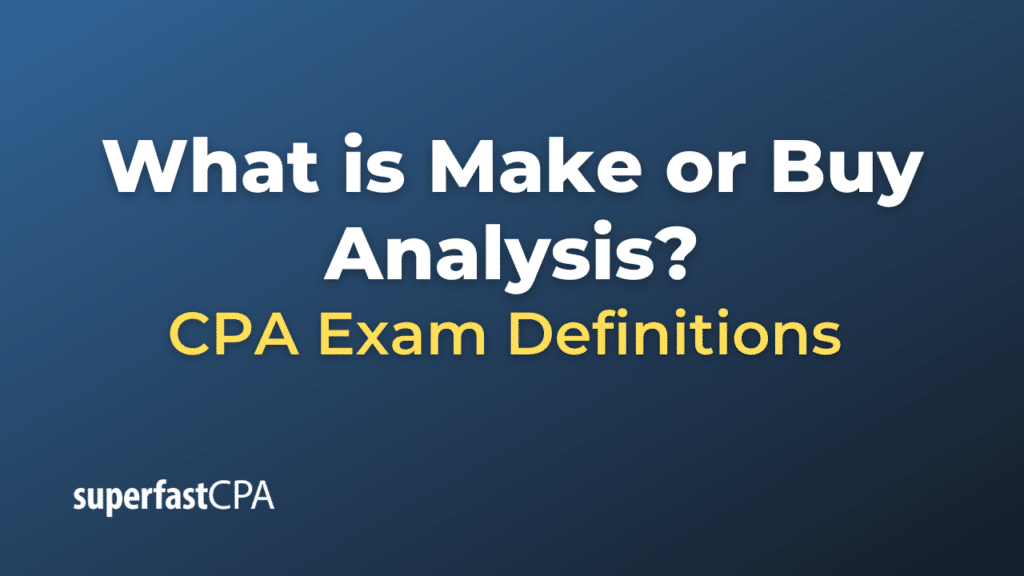Make or Buy Analysis
A “make or buy” analysis is a business decision-making process used to determine whether it’s more cost-effective to produce goods or services in-house (“make”) or to purchase them from an external supplier (“buy”).
The analysis considers both quantitative and qualitative factors:
Quantitative Factors:
- Cost: The analysis compares the cost of production, including direct costs (like materials and labor) and indirect costs (like overhead), against the cost of purchasing the goods or services externally.
- Capacity: It’s important to consider whether the business has the necessary resources and capacity to produce the good or service in-house without disrupting other operations.
- Control: Manufacturing in-house gives a business more control over product quality, delivery times, and intellectual property.
- Core Competencies: The analysis should consider whether production aligns with the company’s core competencies, or whether resources would be better used elsewhere.
- Relationships: There can be risks involved with relying on external suppliers, such as disruptions in supply or changes in prices.
A make or buy decision isn’t always an all-or-nothing choice. Sometimes, a company might choose a hybrid approach, such as manufacturing a portion of the product in-house and outsourcing the rest.
It’s important to remember that the lowest cost option may not always be the best choice if it compromises quality, delivery times, or other important business factors.
Example of Make or Buy Analysis
Let’s consider an example of a furniture company that specializes in high-quality, handmade wooden tables. The company is considering whether to produce the table legs in-house or buy them from an external supplier.
Here’s how the make or buy analysis might look:
- Cost Analysis:
- Make: The company estimates that producing the table legs in-house would cost $50 per set, including the costs of wood, labor, and overheads.
- Buy: An external supplier offers to provide the table legs at $40 per set.
- Capacity and Expertise:
- Make: The company has spare capacity in their workshop and skilled carpenters who are capable of producing high-quality table legs.
- Buy: However, if the company decides to make the table legs in-house, it might delay the production of other furniture pieces due to capacity constraints.
- Quality and Control:
- Make: Making the table legs in-house would ensure consistency in quality and allow for customization.
- Buy: If the company buys the table legs from the supplier, it might have less control over quality.
In this situation, while buying the table legs is the cheaper option, making them in-house provides more control over quality and allows for customization, which aligns with the company’s brand as a high-quality, handmade furniture producer.
So, the company may decide to produce the table legs in-house despite the higher cost because it aligns more closely with their strategic objectives. This example shows that while cost is a critical factor in a make or buy analysis, it’s not the only consideration.













